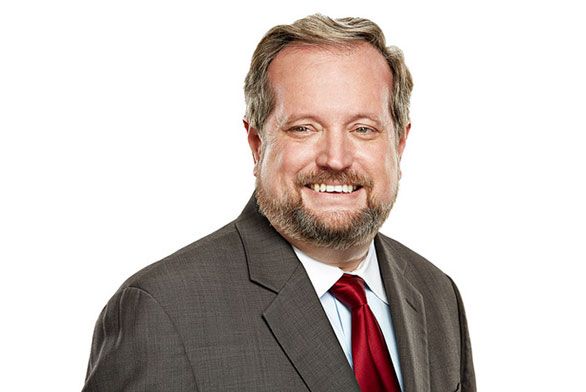Giving Tuesday Success Reflects an Evolving View of Philanthropy
November 14, 2023 | By Eve Tolpa
It wasn’t long after graduating from St. John’s that Brett Heavner (A89) first encountered a common misunderstanding about alumni philanthropy. The college had just spearheaded one of its early capital campaigns in 1996, and he was asked to be a reunion class leader—a role that involved encouraging his peers to donate to the annual fund.

“There were a lot of them who told me, ‘I’m not making very much money. Whatever I could give would be really a small amount, so why should I bother?’” says Heavner.
Immediately he’d explain the hidden factor: the advantage of class participation as a whole, regardless of donation per member. “A higher percentage of giving, even if it’s a relatively small amount, makes the college more competitive in seeking grants or other donations from non-alumni sources,” Heavner recalls telling them.
Heavner still remains so convinced about the value of philanthropy that he recently set up a GivingTuesday challenge for November 2023. By pledging to match donations dollar-for-dollar up to $10,000 from any source—not just alums—he ultimately helped the college exceed its goal of 400 donors.
St. John’s initially participated in the national day of giving in 2017. Since then, the college has seen a marked increase in alumni participation. The college’s very first GivingTuesday fundraiser had 64 donors. In 2018 the number had swelled to 358, and in 2022, GivingTuesday produced more than 500 gifts.
“The matching is really kind of a fun way to show your colleagues you’ve got some skin in the game,” says Heavner. “That you’re putting your money where your mouth is.”
Backing up beliefs with action is nothing new for Heavner, whose support for St. John’s stretches back nearly three decades. In the early 2000s he became involved in Philanthropia, a St. John’s organization for which he eventually served as chair. The precursor to the Alumni Association’s Alumni Giving Council, Philanthropia was “focused on getting communications out to alums about fundraising and what the annual fund went towards,” Heavner says.
Just before COVID-19’s arrival, he was elected to the Alumni Association Board, where he participated in the career services working group and helped struggling graduates find jobs in a world that had suddenly gone remote.
“Our main task was to help them figure out what field they were interested in: law or medicine or journalism, environmental science, teaching, whatever,” says Heavner, a trademark, copyright, and advertising lawyer in Washington, DC. “Then we would find someone who was an alum in that field and match them up, so they could talk and figure out what the next steps were.”
“The initiative has now become known as the Odyssey Program, and it’s really expanded,” he continues. “I, myself, have actually hired a number of Johnnies—some through this program.”
Throughout his time spent with mentees and recent grads, Heavner noticed a generational shift vis-à-vis alumni giving: “I would say they have a better appreciation for the impact of philanthropy than we had in the late eighties and nineties—understanding that tuition doesn’t just cover everything," he notes. “I think some of that is due to the very obvious role that alumni giving played in the tuition reset of 2018.”
And as with so many things, philanthropy takes on a different flavor at St. John’s than at other institutions. “Alums are more likely to understand, from their own personal experience, the unique needs and structure of the college. If you’re going to a more traditional college, you give money to the sports program or to a department that aligns with your career as way to network,” Heavner says. “St. John’s is different. It’s not about a new stadium or a fellow alum’s pet project. It’s about the Program, and people know why it’s important, how it speaks to them, and how it changed them. This allows us to work together.”
That collaboration can take many forms, as Heavner’s history of service to the college demonstrates. (His latest chapter started when he became president-elect of the Alumni Association Board this past October.)
“I would encourage people to be involved not just by giving money but by volunteering,” he says. “A lot of friends help out at the croquet match and get the tents set up or do crowd control. Other people volunteer with admissions, talking to prospective students and things like that.”
For Heavner, there is personal fulfillment in the act of giving, and getting to know younger Johnnies in a work setting only reinforces his commitment to keeping the Program alive.
“I just enjoy seeing the recent grads bringing such a thoughtful and interesting energy to life,” he says. “As someone who’s employing people from St. John’s, I think it makes our society stronger, and it makes my particular profession stronger. It would be great to see that in government policy and medicine, in teaching. That’s what I get out of supporting the college: bringing critical thinking into the real world. I love that my support of the college makes that happen.”

